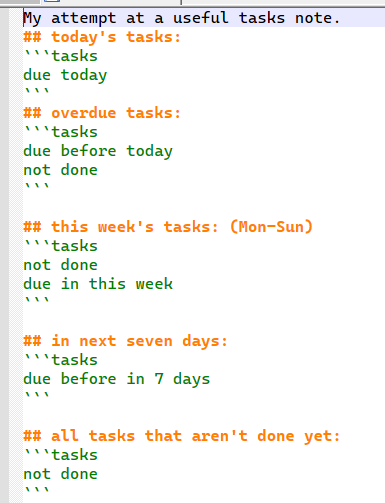I’ve been chronicling my journey from Evernote to Obsidian here on my blog; here’s a link to my last post about that. I thought I’d write a post today to mark the “point of no return” with this project.
This morning, I deleted all of the notes from my Evernote account, and canceled my paid account. I didn’t completely delete my account; I now have just the free version, so if I need any of my old notes in the next week or two, I could probably log in and pull them out of my trash. But, for all practical purposes, I’m committed to Obsidian now, as my “trusted system.”
I think I’ve got Obsidian set up the way I want it now, but there’s some stuff I want to clean up and/or tweak. First, I’m still trying to clean up all of my images/attachments that came over from Evernote. I initially put them in separate sub-folders for each notebook that I imported from Evernote. Now, I’m trying to consolidate them into one top-level “_resources” folder. As I’m doing that, I’m cleaning up file names on them a bit. A lot of them have names like “img_1234.jpg” or “snapshot.1.jpg”, so I’m trying to rename those to be a bit more unique and descriptive. I initially tried a plugin that automatically renamed them to match the name of the note that they were referenced in, but that plugin seemed to cause some issues, so I gave up on that. Now, I’m going through them a few at a time. I’m not renaming all of them; if they’re already named with a date/time stamp of some kind, or anything else that’s reasonably unique, I’m leaving them be. This is still probably overkill, but it’s also giving me a chance to look at some of the older notes and clean them up a bit too. Eventually, I’ll be done with that.
I’m also experimenting a bit with how I’m going to record my day-to-day activities and task completions. I’m using the tasks plugin, and that’s working well so far, as a replacement for Evernote reminders. To record day-to-day activities, in Evernote, I used to keep a year-long task note, named “Tasks 2025” (or whatever year it was), with a bulleted list of ongoing projects and simple to-do items at the top. On any day where I was working on stuff, I’d create a date-stamped list of stuff I worked on that day. That list would get pushed down below the master project/to-do list when I was done with it, so, by the end of the year, the note would be a reverse-chronological list of everything I’d done that year. (Well, not everything, but you know what I mean.)
In Obsidian, I was initially going to keep doing that. But then I thought about trying daily notes instead. I started that on January 1, and it’s working OK so far. But I have a bit of a hybrid system now, where I’m using a combination of three notes to track things:
- A “tasks” note that is just a bunch of task queries, to show me what’s due today, what’s due in the next week, and a master list of all pending tasks.
- A “Tasks 2026” note, with that master list of tasks, projects, and simple to-do items.
- A daily note each day, with the list of stuff I did that day.
So that’s probably too much stuff. I should probably consolidate the note with the task queries and the note with the project (etc) list. But I haven’t settled on how I want that to look. Either way, I think I’m on the right track. I just haven’t converged on exactly what I want yet.
I still have a couple of friction points with Obsidian. Sync is occasionally not as reliable as I’d like it to be. I guess I need to get used to looking at the little sync status icon in the lower right corner of the screen and not exiting Obsidian until it’s green. (Evernote sync had been very reliable lately, and I’d been taking that for granted. I guess that was because Evernote had really transitioned to an online-first experience, while Obsidian remains a local-first experience. The Evernote client, I think, was constantly saving stuff to their back-end; the local database was probably being treated as just a cache, really.)
Most of the other friction points are just little things that I need to get used to, or find ways to work around. I’ll get there.
